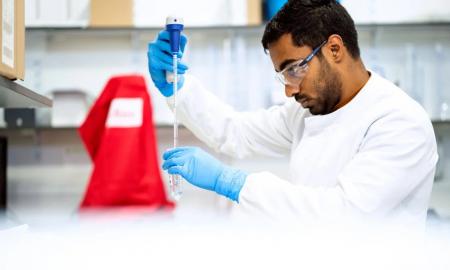pexels.com
It'd be good to think that we could all go to work and be 100% safe. Sadly, accidents at work happen at an astonishing rate. And the numbers aren’t just confined to hazardous workplaces such as construction or mining. They can occur anywhere - from the office to the boardroom. We’ve put together this list of dangerous hotspots for employers and employees. If you are a boss, you should make sure you are aware of the most common issues to prevent staff injuring themselves and making a compensation claim. And if you are a worker, it’s important to be mindful of the fact that an accident at work can have a dramatic impact on your life.
1. Lack of education
First of all, employers have a responsibility to ensure that workers know about every hazard in the workplace. Health and safety training is vital so that everyone understands how and why accidents happen. If an employer fails to train their staff, they could leave themselves open to an accident at work claim. According to UK Claim Lawyers, if a worker is not wholly responsible for the accident, they should be able to make a claim for compensation. However, getting the proof can sometimes be tricky. You will need to collect evidence to prove that your employer has been failing to do their duty to protect your health and safety. Obtain witness statements if possible, and take pictures of any wet floors or loose cables that caused your fall.
2. Slips, trips and falls
Slips, trips and falls are the most common cause of injuries at work. And the simple truth is that most can be avoided by following safety guidelines properly. It's down to your employer to make sure that the workplace is safe, but you also have responsibilities. It’s the simplest things that often lead to problems. Leaving rooms in an untidy state or failing to clear up spilt liquids are common culprits for slips, trips and falls.
pexels.com
3. Fire
It doesn’t take much for a small fire to cause chaos, severe injury, and tragedy in the workplace. While some fires cannot be stopped - such as in the case of arson - most are preventable. Making sure you have high housekeeping standards so that flammable materials are stored away correctly is a good start. Equipment maintenance is also essential - extinguishers and alarms, in particular. Better security planning can keep the threat of arsonists at bay. Businesses should also ensure they are performing fire drills on a regular basis. Yes, everyone moans and finds fire drills a burden. But the simple fact is that when everyone practices what they need to do, it saves lives. Don’t forget that fire prevention needs to run through any company as part of the culture. Both employers and employees need to play a vital role in prevention.
4. Physical problem areas
Take a look around your workplace and there is danger lurking everywhere. Machinery that doesn’t have guards and also has exposed moving parts can lead to severe injuries. Heavy vibrations from that machinery can cause objects to fall from great heights, such as storage areas. Ladders and scaffold can break or become unsafe over time. The simple truth is that when you look hard enough, you will find something unsafe at work on a daily basis. It is essential, then, for businesses to perform regular equipment and hazard checks to ensure the safety of anyone in the building.
pexels.com
5. Electricity
All modern companies rely on electricity, and it’s the source of power that gives them everything they need to do business. But it is also the source of potential danger and is a big hazard that all bosses and workers need to take seriously. From a simple power lead to a complicated generator, anything electrical in the workplace can injure or kill. Any voltage over 50 volts AC - or 120 volts DC - is dangerous, and accidents at this level can sometimes end with a fatality. But what can employers and employees do to protect themselves from electric shocks? Again, it’s a lot easier than you might think. Regular maintenance will keep all your electrical equipment in good order. It will also ensure you are working within legal requirements. Education of employees to the potential hazards of electricity makes for a safer working environment. And, if any workers need to access hazardous electrical points, they should always wear the correct clothing.
6. Confined spaces
Not all areas of the workplace are suitable for all activities. For example, if you are working with toxic chemicals, it is vital to work in a large, open area with plenty of ventilation. Activities such as welding, sawing, or machine operation should also be performed in spaces that are not confined. In fact, even small, enclosed office spaces can become hazardous and are often the cause of many workplace injuries. Employers can do several things to protect against these issues. First of all, make sure that enclosed spaces that contain dangerous substances are closed off to everyone but the relevant staff. Limit the number of people that are allowed in an enclosed area, too. And always make sure there is plenty of space around heavy, dangerous machinery so that workers can do their jobs without hindrance.
7. Illness and biological hazards
People get ill, come to work, and can spread that illness to everyone else. While employers want their staff to come to work while on their death beds, they have to ask themselves if it is worth it. All it takes is a cough, sneeze, or a handshake, and a virus can rip through their entire company. There are other biological hazards to consider, too. For example, without maintenance, air con units can spread bacteria throughout a whole building in a matter of days. Offices that aren’t cleaned properly can harbour everything from E.coli to Staphylococcus aureus. In fact, the average work desk is home to around 10 million bacteria at any one time, and many computer keyboards are dirtier than the average toilet. Pretty grim, right? Employers should encourage workers to ensure they keep their desks as clean as possible. Try to keep employees from eating while at their desks, as crumbs of food encourage the growth of bacteria.
pexels.com
8. Chemicals and cleaning products
All businesses use chemicals of some sort. Cleaning products, for example, are often packed full of solvents, fumes and vapours that can be a significant hazard. They can be the cause of everything from skin irritation through to severe burns. Any employee working with hazardous substances has to be trained to use them in the correct manner. Make sure that you check the COSHH regulations to ensure you have everything covered.
9. Noise
Next, we're going to take a look at something that many people may not realise. Noise hazards in the workplace are a lot more common than you think. Anywhere that operates heavy machinery - or is near it - runs the risk of damaging employees hearing on a permanent basis. Even working at an airport can have a significant impact on your ability to hear. But how do employers tell if their workplace is too noisy? There are plenty of noise alarm systems that can tell you when you reach an unsafe threshold. But even if people have to raise their voices when talking to someone a yard or so away can be a significant sign. It is important that employers train up their staff to protect their ears, either with earplugs or ear defenders.
10. Sleep deprivation
Of course, everything we have spoken about today can be prevented in the vast majority of cases. Training, education, and investment in the right equipment can all help protect workers from harm. So the big question is, why do accidents still continue? Sometimes it is down to carelessness and lack of attention. But one of the greatest factors is sleep deprivation. According to various studies, lack of sleep is often the cause of accidents and incidents all over the world. Lack of sleep causes deterioration in performance, increase in distractions, and limits communication. People make more mistakes when they are tired, too, and tend to forget vital information. Tiredness and fatigue also contribute to bad moods, which can often lead to aggressive or violent behaviour. And finally, people who haven’t had enough sleep are often prone to taking more risks. All these factors add up to a lot of potential danger in any workplace. So what can employers do to ensure their staff are getting enough sleep? While it’s obvious bosses have no control over their employees’ personal lives, education can help. Tiredness causes poor insight into individual performance, meaning people don't know they are tired. By pointing out the dangers of sleep deprivation, employers can drum in the issue’s importance.
There are many other dangers in the workplace, of course. But managing these core risks helps everyone enjoy much safer and healthier working environments.






